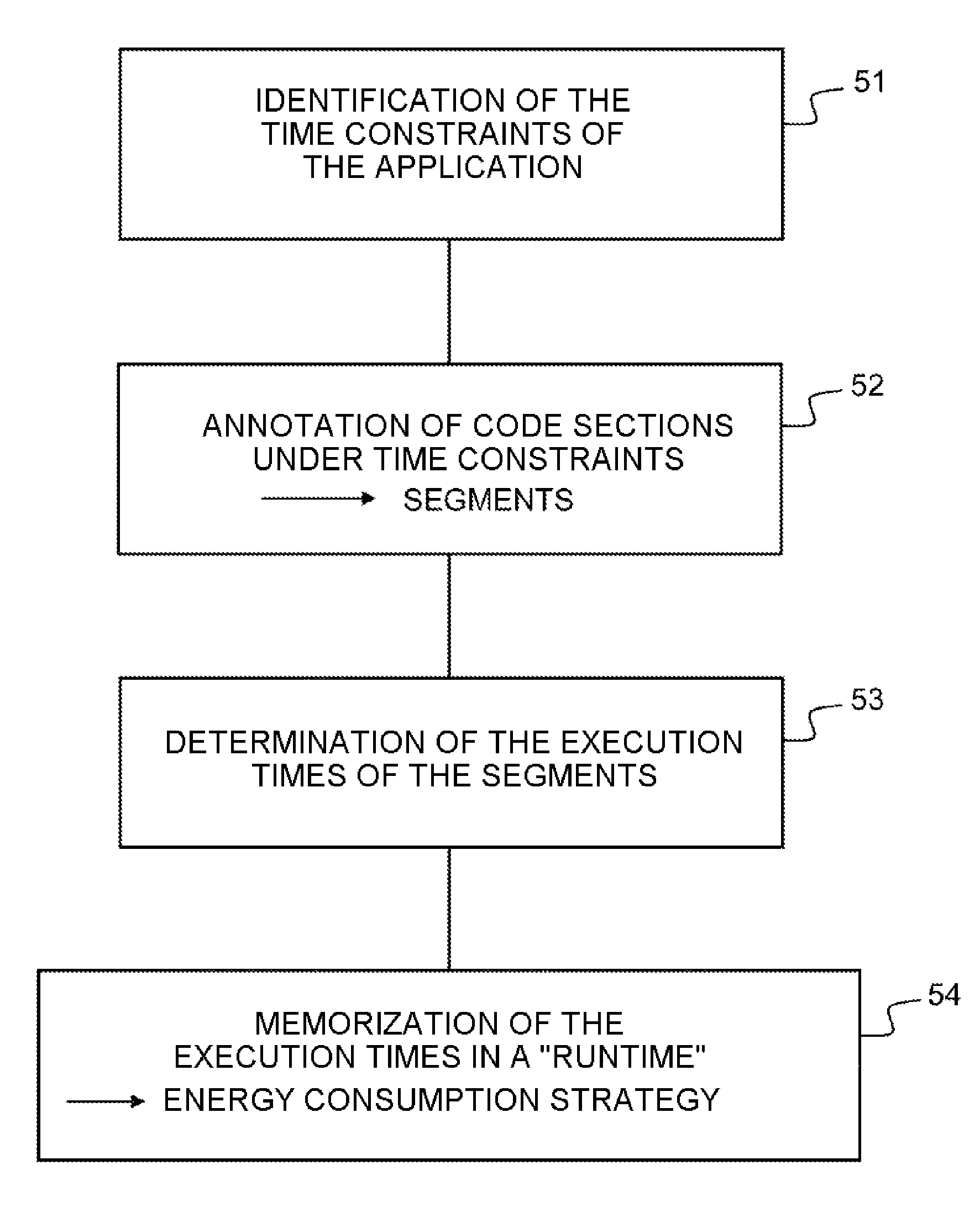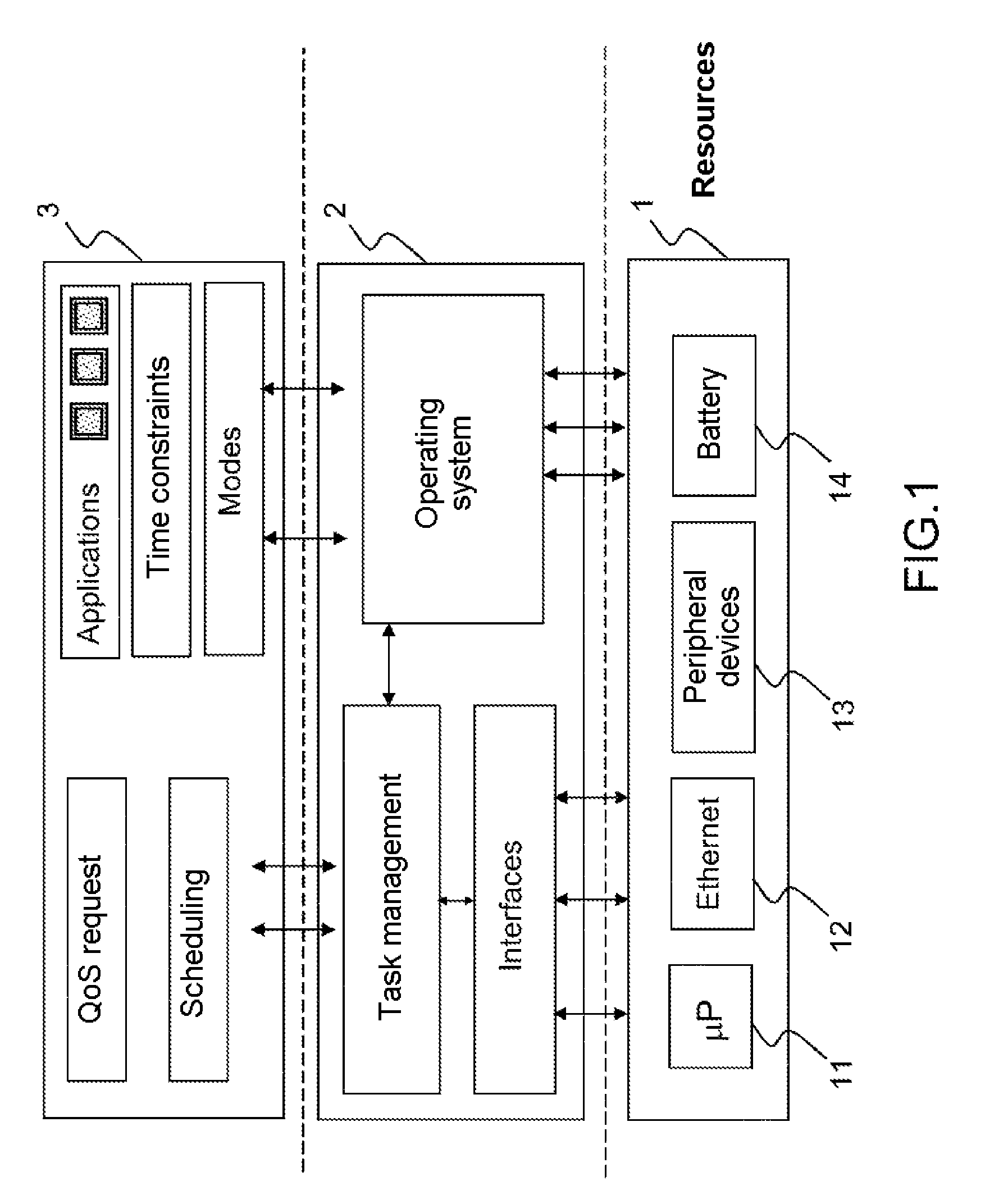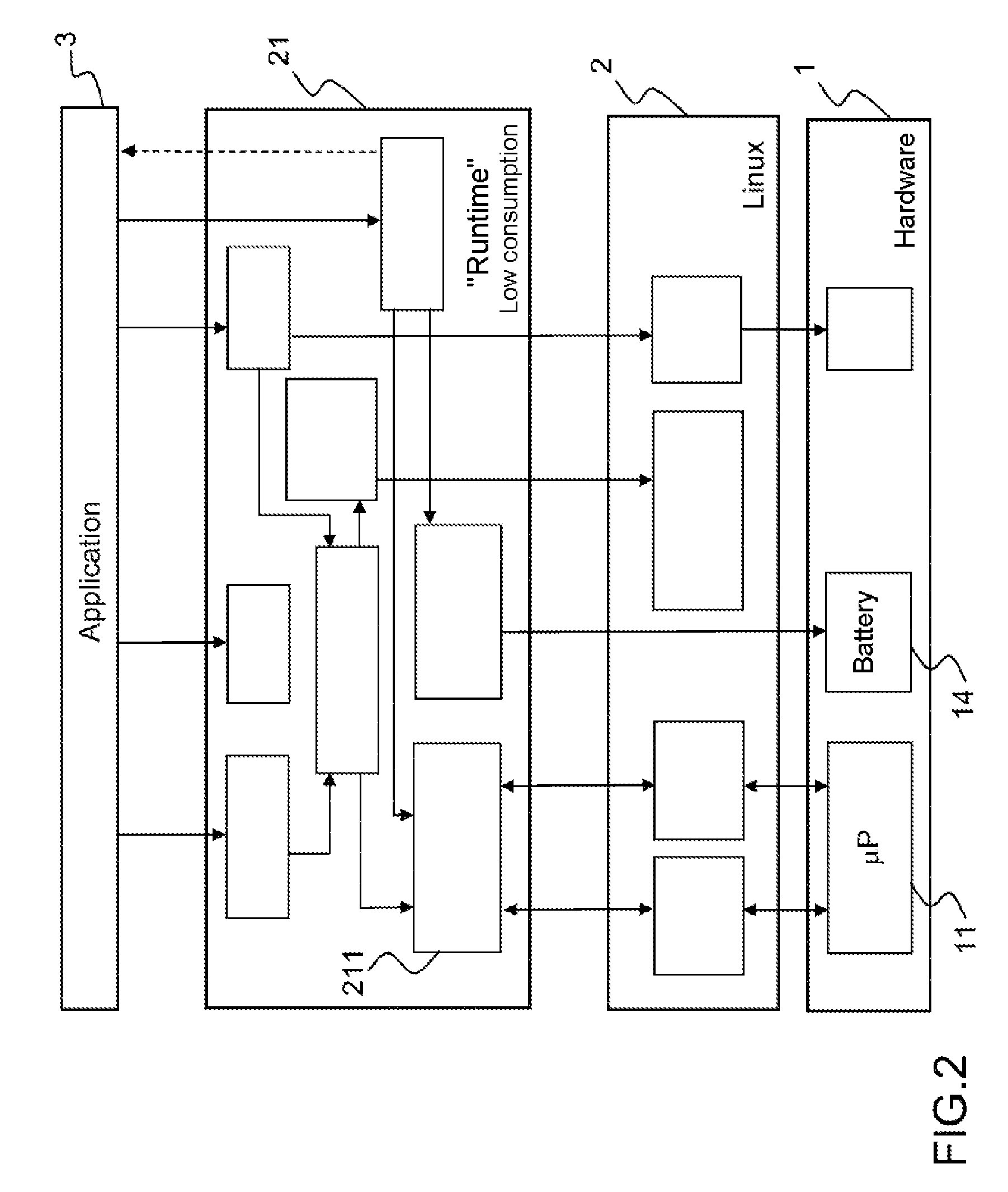Method of managing the energy consumption of an application executable in various environments and software architecture implementing such a method
a software architecture and energy consumption technology, applied in the direction of liquid/fluent solid measurement, multi-programming arrangement, instruments, etc., can solve the problems of increasing computation performance levels, increasing electrical consumption, and reducing hardware energy autonomy tim
- Summary
- Abstract
- Description
- Claims
- Application Information
AI Technical Summary
Benefits of technology
Problems solved by technology
Method used
Image
Examples
Embodiment Construction
[0028]FIG. 1 presents an overview of the three layers that make up a conventional embedded system. The first layer 1 consists of the hardware. This hardware comprises the resources of the application. The resources are notably made up of processors 11, possibly an Ethernet port 12, peripheral devices 13 as well as one or more batteries 14.
[0029]The second layer 2 corresponds to the operating system. This contains three main services. The task scheduler 21, communicating with an interface driver module 22 and an event observation module. These three services are necessary for an energy management strategy to be put in place.
[0030]The third layer 3 is made up of the application system, comprising the various applications to be implemented. Conventionally, the operating system enables the application system to operate with the resources.
[0031]FIG. 2 presents a low-consumption software architecture according to the invention. More particularly, the software architecture according to the...
PUM
 Login to View More
Login to View More Abstract
Description
Claims
Application Information
 Login to View More
Login to View More - R&D
- Intellectual Property
- Life Sciences
- Materials
- Tech Scout
- Unparalleled Data Quality
- Higher Quality Content
- 60% Fewer Hallucinations
Browse by: Latest US Patents, China's latest patents, Technical Efficacy Thesaurus, Application Domain, Technology Topic, Popular Technical Reports.
© 2025 PatSnap. All rights reserved.Legal|Privacy policy|Modern Slavery Act Transparency Statement|Sitemap|About US| Contact US: help@patsnap.com



